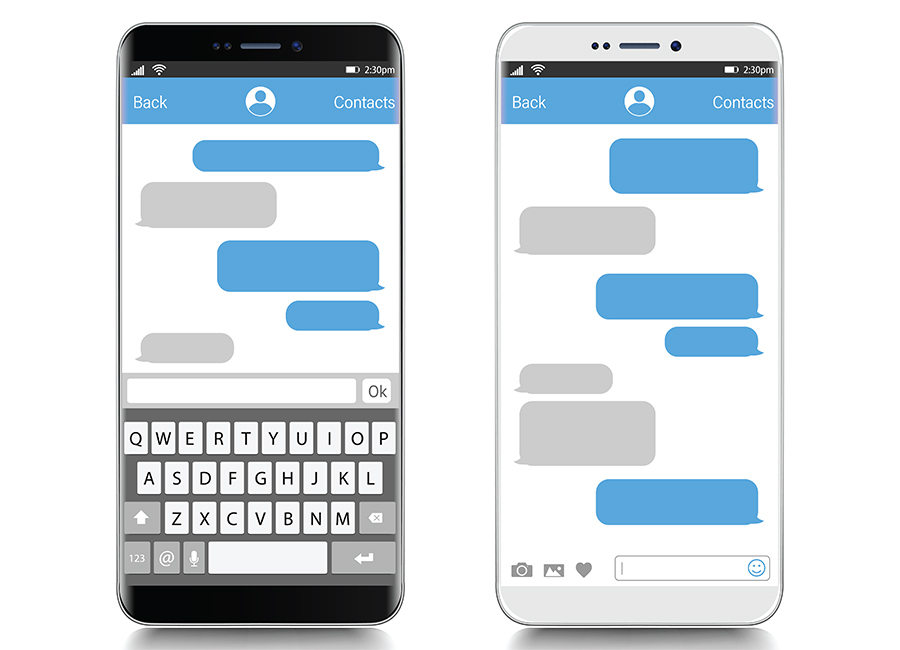Say What? Crack the Secret Code of Teen Texting

If you have grandchildren of a certain age, you might be connecting with them almost as much via text as you do in person these days. And while it’s great that technology allows us to stay in touch in ways that weren’t possible in the past, there is definitely a bit of a learning curve for those of us who are old enough to remember rocking out to 8-track tapes.
For instance, a reply to a text message like, “Hi darling! Miss you and hope school is going well!” might look something like this:
“Hey! 143 SYS! HAK HAND!”
This gobbledygook may appear to be a series of strange typos, but it’s simply written in acronyms—the secret language of young people. Believe it or not, this message is actually teen-speak for, “Hey! I love you and I’ll see you soon. Hugs and kisses! Have a nice day!”
These abbreviations really do almost feel like a completely different language, but using them is just a quick—and sometimes deliberately cryptic—way for teens to communicate via text. It’s fast and easy once they’ve learned the lingo, but the fact that they can send texts to their friends without parents being able to sneak an over-the-shoulder peek and easily understand the message content is definitely a bonus for kids.
However, being able to monitor message content—particularly in younger teens—is important, and it’s one of the reasons that it’s good for parents and guardians to be familiar with the acronyms kids are using to chat with each other via text.
Of course the other reason is so that you can actually understand what the heck they’re saying when they dash off a quick text to you!

So, what are they saying?
If you’re seeing the following short forms in a message from a teen you love, it’s just their way of reaching out and staying in touch with someone they obviously care about—and happily that includes you!
143: I love you
ATM: At the moment
BFN: Bye for now
BRB: Be right back
BTW: By the way
CU: See you
FWIW: For what it’s worth
GB: Goodbye
GTG: Got to go, or good to go
HAK: Hugs and kisses
HAND: Have a nice day
IDC: I don’t care
IDK: I don’t know
IYKWIM: If you know what I mean
ILY: I love you
IMHO: In my honest opinion
IRL: In real life
JK: Just kidding
JSYK: Just so you know
KK: Cool, okay
LOL: Laugh out loud
LMK: Let me know
NM: Never mind
PCM: Please call me
RN: Right now
ROFL: Rolling on the floor laughing
SYS: See you soon
TIA: Thanks in advance
TL;DR: Too long; didn’t read
TTYL: Talk to you later
YOLO: You only live once
YTB: You’re the best
It’s important to note that while most abbreviations are completely harmless, there are some “red flag” acronyms you should know if you’re the one monitoring a teen’s social media usage. Visit VeryWellFamily.com to learn more about these potentially troublesome abbreviations.
Now that you have a handy cheat sheet to help you decipher puzzling acronyms, the next time you get a friendly text from a teen in your life, you can decide whether you want to continue to play dumb or admit that you’ve cracked their code by ending your response with something like, “TTYL and don’t forget ILY!” You never know—they might get a kick out of seeing how tech savvy you actually are! Plus, knowing that you’ve made an effort to speak their language could encourage them to reach out more often, creating a richer dialogue and an even deeper bond between the two of you.
So, since you now have a better idea of what they’re trying to say, make sure the lines of communication stay open by getting a wireless plan and phone deal that works for you so you can always text right back.
Hey, JSYK
Zoomer Wireless provides simple and affordable cell phone service to Zoomers across Canada.
Our friendly, Canadian customer service team is just a free phone call away should you have any questions. If you want to inquire about our cell phones or plans, Zoomer Wireless has a large selection of devices and plans for all your wireless needs. Call our dedicated live agents today at 1.888.655.1252 or visit www.zoomerwireless.ca.
